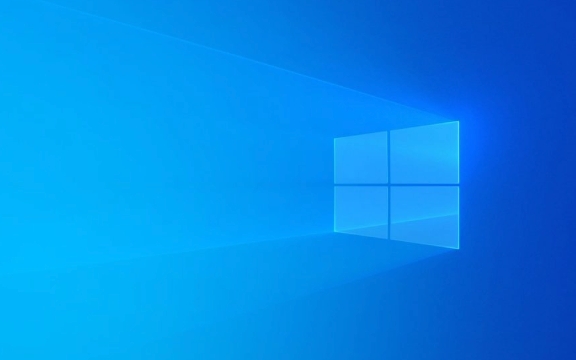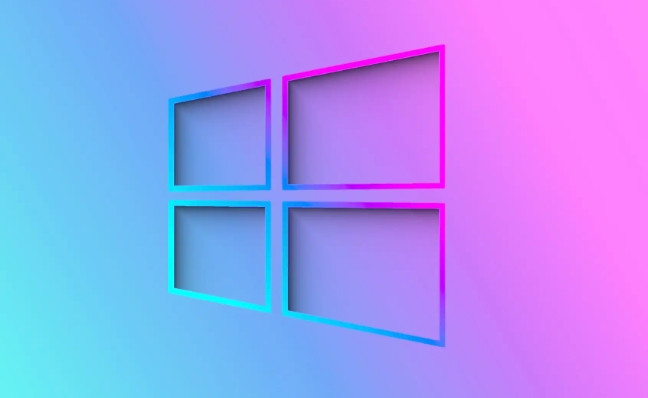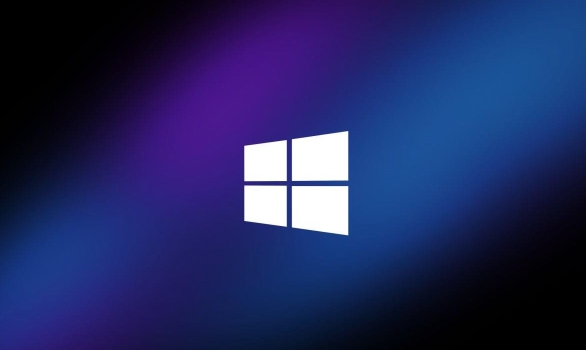My Windows laptop display drivers keep crashing
Jul 21, 2025 am 03:29 AMWindows laptop display drivers frequently crash, usually caused by outdated or damaged drivers, software conflicts, overheating, or hardware problems. 1. First try to update or reinstall the graphics card driver through Device Manager, or download the latest version from the official website of the GPU manufacturer. 2. Check for overheating problems, use tools such as HWMonitor to monitor temperature, clean the vents, avoid using the notebook on soft surfaces, and check whether there are high GPU occupancy programs through the Task Manager. 3. Adjust display settings, turn off hardware acceleration and visual effects, and temporarily change resolution or refresh rate. 4. Check and install Windows updates, roll back the driver or system version if necessary, and check for possible conflicting software such as antivirus software, screen recording tools or overwrite applications. After checking these problems one by one, most display driver crash problems can be solved by themselves.

If your Windows laptop's display drivers keep crashing, it's usually due to outdated or corrupted drivers, incompatible software, overheating, or hardware issues. The good news is that most of these problems can be resolved without needing professional help.

1. Update or Reinstall Your Graphics Drivers
Outdated or corrupted graphics drivers are the most common cause of display driver crashes.
- Use Device Manager to check for updates:
- Press
Win Xand select Device Manager . - Expand Display adapters , right-click your GPU, and choose Update driver > Search automatically for updated driver software .
- Press
If updating doesn't help, try reinstalling the driver:

- In Device Manager, right-click your GPU and select Uninstall device .
- Check the box that says “Delete the driver software for this device” if available.
- Restart your laptop — Windows will attempt to reinstall the driver automatically.
Alternatively, download the latest driver directly from your GPU manufacturer's website (eg, NVIDIA, AMD, Intel).
2. Check for Overheating or High GPU Usage
Overheating can cause your GPU to throttle or crash. This is especially common on laptops where cooling is limited.

- Use a tool like HWMonitor or Core Temp to check your GPU and CPU temperatures.
- If your laptop feels unusually hot or the fan runs constantly, clean the vents with compressed air and make sure nothing is blocking airflow.
- Avoid using the laptop on soft surfaces like beds or couches — use a hard, flat surface.
Also, check for high GPU usage:
- Open Task Manager (
Ctrl Shift Esc) and go to the Performance tab. - If a background app or browser tab is using too much GPU power, close it and see if the issue improves.
3. Disable or Adjust Display Settings That May Cause Instability
Some visual settings or features can conflict with your system and lead to crashes.
Try turning off hardware acceleration in apps like Chrome:
- Go to Settings > System > Advanced system settings .
- Under Performance , click Settings and uncheck Hardware acceleration (or check if it's already off and toggle it back on — sometimes switching it resets things).
Also, disable unnecessary visual effects:
- In the same Performance Options window, choose Adjust for best performance .
Another thing to test: change your screen resolution or refresh rate temporarily. Sometimes mismatched settings can cause instability.
4. Check for Windows Updates and Conflicting Software
Windows updates often include fixes for known bugs or compatibility issues.
- Go to Settings > Windows Update and install any pending updates.
- Occasionally, a recent update might have caused the issue — you can try rolling back the display driver or even the OS if needed.
Also, consider software conflicts:
- Antivirus, screen recording tools, or overlay apps (like Discord, Steam) can interfere with display drivers.
- Try disabling or uninstalling such programs temporarily to see if the crashes stop.
That's about it. Most display driver crashes come down to one of these areas — start with the easiest fixes like updating drivers and checking for overheating before diving into more complex troubleshooting.
The above is the detailed content of My Windows laptop display drivers keep crashing. For more information, please follow other related articles on the PHP Chinese website!

Hot AI Tools

Undress AI Tool
Undress images for free

Undresser.AI Undress
AI-powered app for creating realistic nude photos

AI Clothes Remover
Online AI tool for removing clothes from photos.

Clothoff.io
AI clothes remover

Video Face Swap
Swap faces in any video effortlessly with our completely free AI face swap tool!

Hot Article

Hot Tools

Notepad++7.3.1
Easy-to-use and free code editor

SublimeText3 Chinese version
Chinese version, very easy to use

Zend Studio 13.0.1
Powerful PHP integrated development environment

Dreamweaver CS6
Visual web development tools

SublimeText3 Mac version
God-level code editing software (SublimeText3)
 How to change the system display language for all users in Windows
Jul 31, 2025 am 08:18 AM
How to change the system display language for all users in Windows
Jul 31, 2025 am 08:18 AM
InstallthedesiredlanguagepackviaSettings→Time&Language→Language®ion,ensuring"SetasmyWindowsdisplaylanguage"isselected.2.Changethesystemdisplaylanguageinthesamemenuandrestart.3.OpenControlPanel→Region→Administrativetab,click"
 How to reset the Microsoft Store in Windows
Jul 31, 2025 am 08:23 AM
How to reset the Microsoft Store in Windows
Jul 31, 2025 am 08:23 AM
ResettheMicrosoftStoreviaSettingsbygoingtoApps>Installedapps,selectingMicrosoftStore,clickingAdvancedoptions,thenRepairandResetifneeded.2.Ifthatfails,re-registertheStoreusingPowerShellasadminwiththecommand:Get-AppXPackage-NameMicrosoft.WindowsStor
 How to install Windows on a Mac without Boot Camp
Jul 31, 2025 am 11:58 AM
How to install Windows on a Mac without Boot Camp
Jul 31, 2025 am 11:58 AM
Without BootCamp, installing Windows on Mac is feasible and works for different chips and needs. 1. First check compatibility: The M1/M2 chip Mac cannot use BootCamp, it is recommended to use virtualization tools; the Intel chip Mac can manually create a boot USB disk and install it in partition. 2. Recommended to use virtual machines (VMs) for M1 and above chip users: Windows ISO files, virtualization software (such as ParallelsDesktop or UTM), at least 64GB of free space, and reasonably allocate resources. 3. IntelMac users can manually install it by booting the USB drive: USB drive, WindowsISO, DiskU is required
 How to reset the TCP/IP stack in Windows
Aug 02, 2025 pm 01:25 PM
How to reset the TCP/IP stack in Windows
Aug 02, 2025 pm 01:25 PM
ToresolvenetworkconnectivityissuesinWindows,resettheTCP/IPstackbyfirstopeningCommandPromptasAdministrator,thenrunningthecommandnetshintipreset,andfinallyrestartingyourcomputertoapplychanges;ifissuespersist,optionallyrunnetshwinsockresetandrebootagain
 How to install Windows on a Mac
Jul 31, 2025 am 10:07 AM
How to install Windows on a Mac
Jul 31, 2025 am 10:07 AM
ForIntel-basedMacs,useBootCampAssistanttocreateadual-bootsystemwithWindowsbypreparingaUSBdrive,downloadingaWindowsISO,partitioningthedisk,andinstallingWindowsalongsidemacOSwithsupportdrivers.2.ForAppleSiliconMacs(M1/M2/M3),usevirtualizationsoftwareli
 Step-by-step guide to installing Windows from an ISO file
Aug 01, 2025 am 01:10 AM
Step-by-step guide to installing Windows from an ISO file
Aug 01, 2025 am 01:10 AM
DownloadtheWindowsISOfromMicrosoft’sofficialsite.2.CreateabootableUSBusingMediaCreationToolorRufuswithaUSBdriveofatleast8GB.3.BootfromtheUSBbyaccessingthebootmenuoradjustingBIOS/UEFIsettings.4.InstallWindowsbyselectingcustominstallation,choosingtheco
 A guide to custom Windows installation options
Aug 01, 2025 am 04:48 AM
A guide to custom Windows installation options
Aug 01, 2025 am 04:48 AM
Choose"Custom:InstallWindowsonly(advanced)"forfullcontrol,asitallowsacleaninstallthatremovesoldissuesandoptimizesperformance.2.Duringsetup,managepartitionsbydeletingoldones(afterbackingupdata),creatingnewpartitions,formatting(usingNTFS),ors
 How to manage AppLocker policies in Windows
Aug 02, 2025 am 12:13 AM
How to manage AppLocker policies in Windows
Aug 02, 2025 am 12:13 AM
EnableAppLockerviaGroupPolicybyopeninggpedit.msc,navigatingtoApplicationControlPolicies,creatingdefaultrules,andconfiguringruletypes;2.Createcustomrulesusingpublisher,path,orhashconditions,preferringpublisherrulesforsecurityandflexibility;3.Testrules






